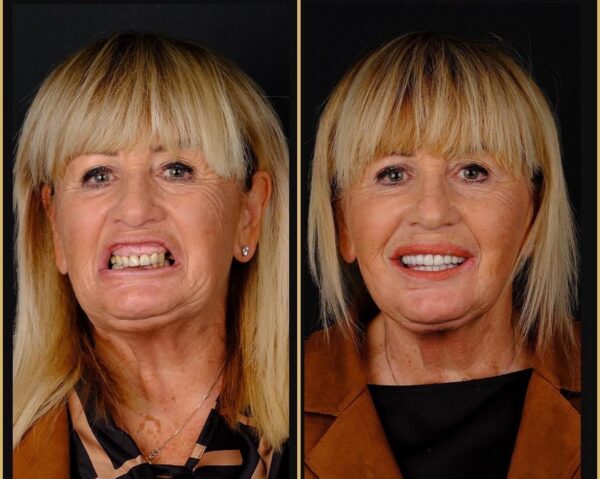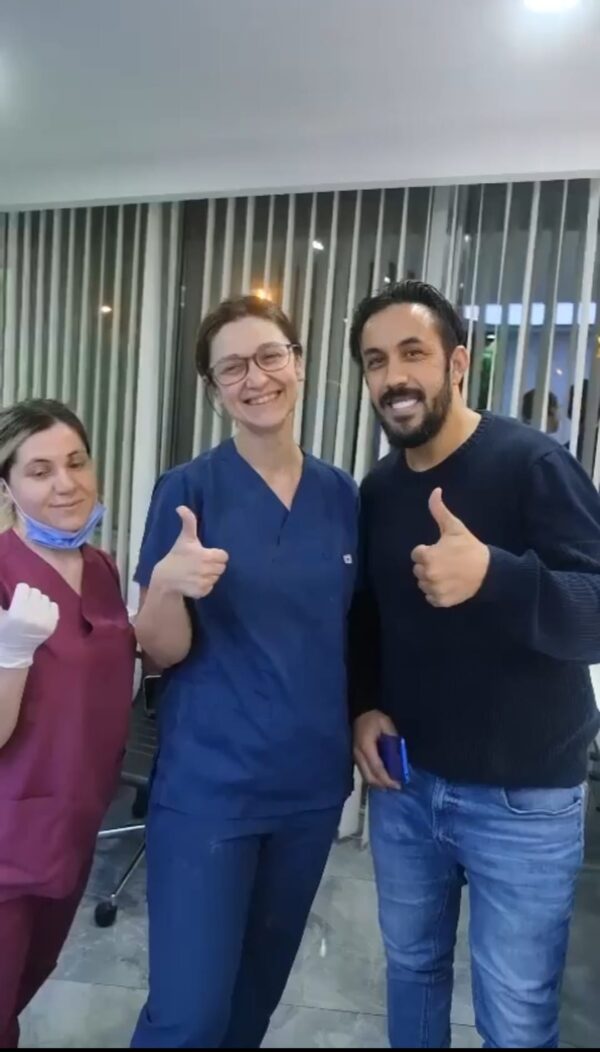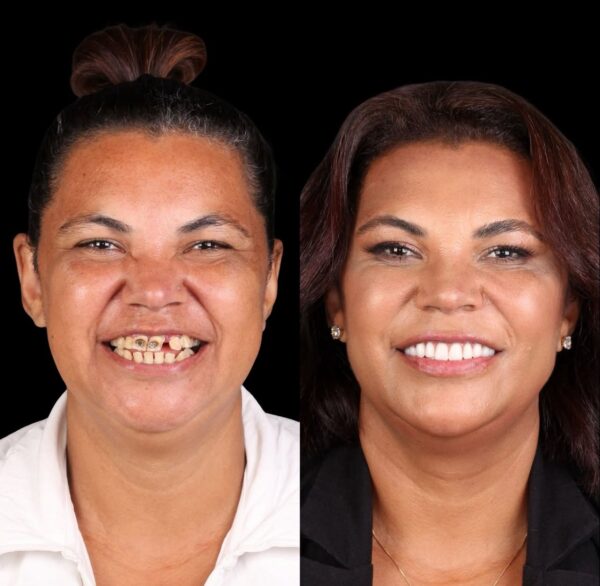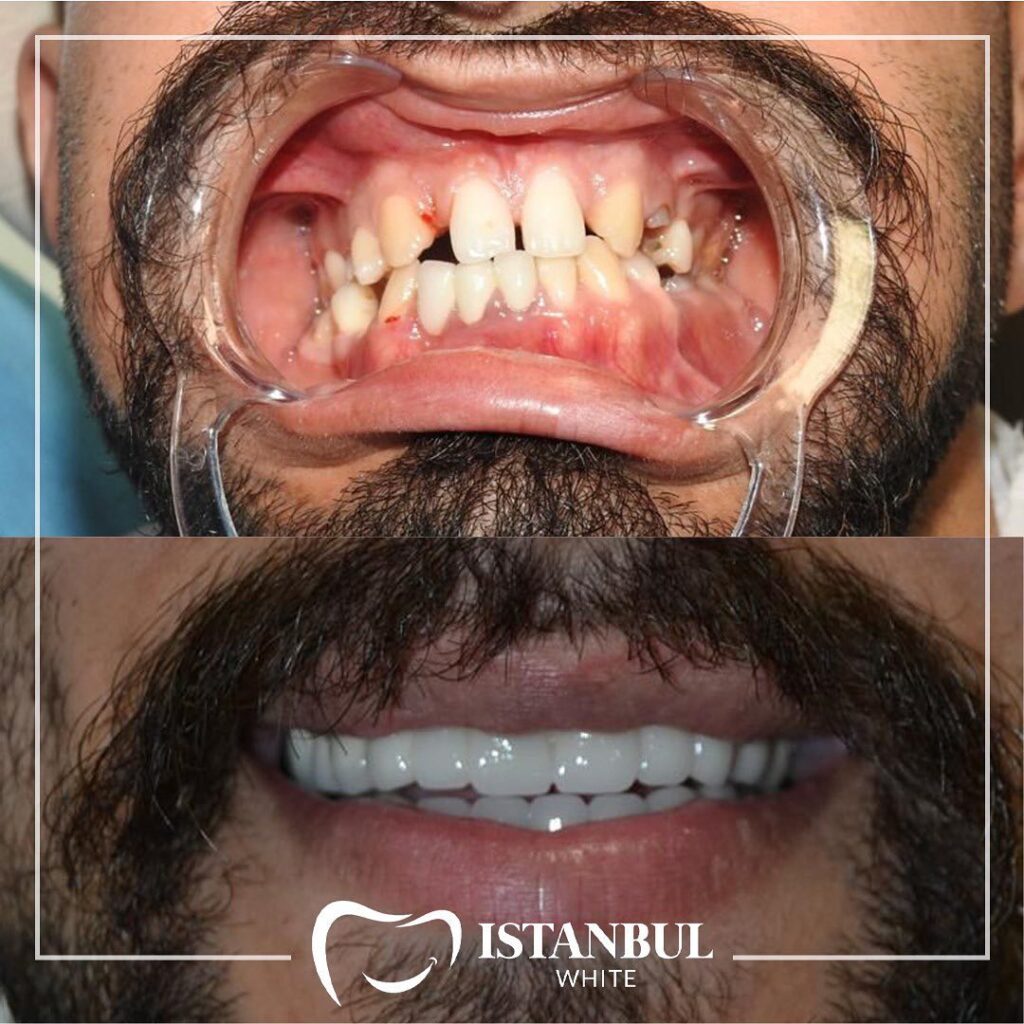The Science of Stability: A Deep Dive into Dental Implant Materials (Titanium vs. Zirconia)
Explore the science behind dental implant materials. Learn why titanium is the industry standard, its exact composition, and how zirconia implants provide a perfect, metal-free alternative for patients concerned about metal allergy and aesthetics.
A schematic image showing a titanium implant screw being inserted into the jawbone (osseointegration) on one side, and a zirconia implant on the other side with a focus on its natural white color.
The Foundation of a Permanent Smile

Dental implants have revolutionized restorative dentistry, offering a long-term, stable solution that closely mimics the function and feel of natural teeth. They are essentially artificial tooth roots that fuse with the jawbone. The success of this process, known as osseointegration, hinges entirely on the material used. These materials must be strong enough to withstand chewing forces and, critically, must be perfectly biocompatible—meaning they are accepted by the body without causing rejection or inflammation.
This comprehensive guide will explore the two dominant materials in modern implantology: titanium and zirconia. We will detail their composition, clinical advantages, and why material choice is a cornerstone of a successful implant journey.
The Gold Standard: Titanium and its Powerful Alloys
For over fifty years, titanium has reigned supreme as the material of choice for dental and orthopedic implants. Its discovery as an effective biocompatible metal was groundbreaking, establishing the foundation for modern implant success rates exceeding 95%.
Why Titanium? The Chemistry of Biocompatibility
Titanium’s success is rooted in a unique chemical property: when exposed to air or body fluids, it instantly forms a thin, protective layer of titanium dioxide (TiO2) on its surface.
- Corrosion Resistance: This TiO2 layer is highly inert, preventing the underlying metal from oxidizing or corroding in the harsh, wet environment of the mouth.
- Osseointegration Catalyst: Bone cells (osteoblasts) readily interact with the TiO2 layer, leading to the direct fusion of the living bone tissue to the implant surface. This is the key to implant stability.
The Composition of the Titanium Implant Screw
While the term “titanium implant” suggests pure metal, most high-quality dental implants are crafted from a specific, high-strength alloy known as Grade 5 Titanium (also chemically denoted as Ti-6Al-4V). This alloy is preferred over pure titanium (Grades 1-4) because it offers significantly higher tensile strength without sacrificing biocompatibility.
The typical composition of this high-performance alloy is:
- Titanium (Ti): Approximately 88-90% – The base element ensuring biounity and bone integration.
- Aluminum (Al): Approximately 5.5-6.75% – An alloying element that increases strength while reducing the metal’s density (making it lighter).
- Vanadium (V): Approximately 3.5-4.5% – An alloying element that improves the mechanical strength, durability, and resistance to deformation under load.
The use of aluminum and vanadium transforms pure, slightly softer titanium into an incredibly tough and durable material, ideally suited to withstand the hundreds of pounds of force generated during chewing. This robustness is critical, especially for molar implants in the back of the mouth.
A Metal-Free Revolution: The Zirconia Implant Alternative
Despite titanium’s excellent track record, a growing segment of the population seeks non-metallic dental solutions. This includes patients with documented metal allergy or those who prefer a holistic approach to their body’s materials. For these individuals, the zirconia implant has emerged as the premier alternative.
Zirconia: A High-Tech Ceramic, Not a Metal
Often confused for a metal due to its strength, zirconia is a ceramic material formally known as Zirconium Dioxide (ZrO2). It has been safely used in medical applications, such as hip replacements, for decades before being introduced to dentistry.
The appeal of zirconia in implantology stems from several key factors:
- Zero Metal Content: Zirconia is completely non-metallic, eliminating any concern regarding metal allergies, sensitivities, or the release of metal ions into the bloodstream.
- Superior Aesthetics: Unlike the gray titanium, zirconia is naturally white and opaque, closely matching the color of natural tooth roots. This is a massive aesthetic advantage, particularly in the highly visible anterior (front) teeth. It prevents the “gum shadowing” or grayish tint that can sometimes occur when a titanium implant is placed under thin gum tissue.
- Holistic Preference: Many patients who prefer metal-free dentistry choose zirconia to maintain an all-ceramic/ceramic-like oral environment.
Zirconia’s Composition and Structure
A zirconia implant is typically composed of over 95% Zirconium Dioxide. Small amounts of stabilizing elements, like Yttria (Y2O3), are added to maintain the ceramic’s structure and improve its long-term stability and strength, making it one of the toughest ceramics known to man.
When Material Choice Becomes Critical: Metal Allergy
While the vast majority of patients tolerate titanium implants perfectly, for a small percentage, the risk of a reaction, though low, exists.
Recognizing and Testing for Titanium Sensitivity
True allergic reactions to titanium are rare, but sensitivities or delayed-type hypersensitivity (Type IV) reactions can sometimes occur. Symptoms are usually localized and chronic, manifesting as:
- Persistent, unexplained gum inflammation or swelling around the implant.
- Recurring peri-implantitis (bone loss around the implant) despite good hygiene.
- Dermatological issues like eczema or persistent rashes.
Before proceeding with treatment, especially if a patient has a history of multiple metal allergies (like Nickel, Gold, or Palladium), specific testing can be done. The Lymphocyte Transformation Test (LTT) is a specialized blood test that can assess a patient’s immune system response to titanium or other metal ions.
The Zirconia Solution for Allergic Patients
If a titanium allergy is confirmed or strongly suspected, the zirconia implant becomes the mandatory material choice. Clinical studies have shown zirconia to be hypoallergenic, with no known reported allergic reactions to the material itself. It provides a safe, proven path to rehabilitation for patients who cannot receive titanium.
Comparing Durability, Design, and Cost
While both materials are highly successful, key differences in mechanical properties and design influence their selection:
Mechanical Differences
| Feature | Titanium (Ti-6Al-4V) | Zirconia (ZrO2) |
| Strength & Toughness | Excellent. High fracture toughness and elasticity (can bend slightly before breaking). | Excellent. High compressive strength, but more brittle (less flexible). |
| Modularity | Typically two-piece design (implant body and separate abutment). | Often a one-piece design (implant and abutment are fused) for strength, though two-piece designs are emerging. |
| Integration Success | Osseointegration is highly predictable and proven over decades. | Osseointegration is excellent; the material is highly tissue-friendly. |
The two-piece design of titanium allows for greater flexibility during the restorative phase—the dentist can choose an abutment with a customized angle. While one-piece zirconia implants are incredibly strong, their lack of angulation flexibility can make them challenging to place in certain anatomical locations.
Cost Implications
The initial cost of implants varies significantly by brand, country, and complexity of the case. However, in general:
- Titanium implants represent the standard price point.
- Zirconia implants are typically 20% to 50% more expensive than titanium. This higher cost is due to the demanding manufacturing process required to mill and stabilize the ceramic material.
For patients whose primary concern is structural reliability and cost-effectiveness, titanium remains the preferred option. For those prioritizing aesthetics and a metal-free guarantee, the premium paid for zirconia is a worthy investment.
Conclusion: Making an Informed Choice
The success of a dental implant procedure relies on the perfect synergy between advanced surgical technique and the use of a highly compatible, durable material. Both titanium and zirconia fulfill these requirements beautifully.
Titanium, with its proven history and robust Ti-6Al-4V alloy, remains the workhorse of implant dentistry, offering unmatched stability and long-term clinical data. It is the default choice for its combination of strength, predictability, and cost.
Zirconia, the modern ceramic alternative, provides a necessary solution for patients with metal sensitivities and raises the bar for aesthetic outcomes, particularly in the anterior zone.
Ultimately, the decision between these two exceptional materials should be a collaborative one, made after a thorough consultation with your dental surgeon, weighing factors such as anatomical requirements, aesthetic goals, budget, and any known sensitivities. Choosing the right material ensures that the new foundation for your permanent smile is built to last a lifetime.





